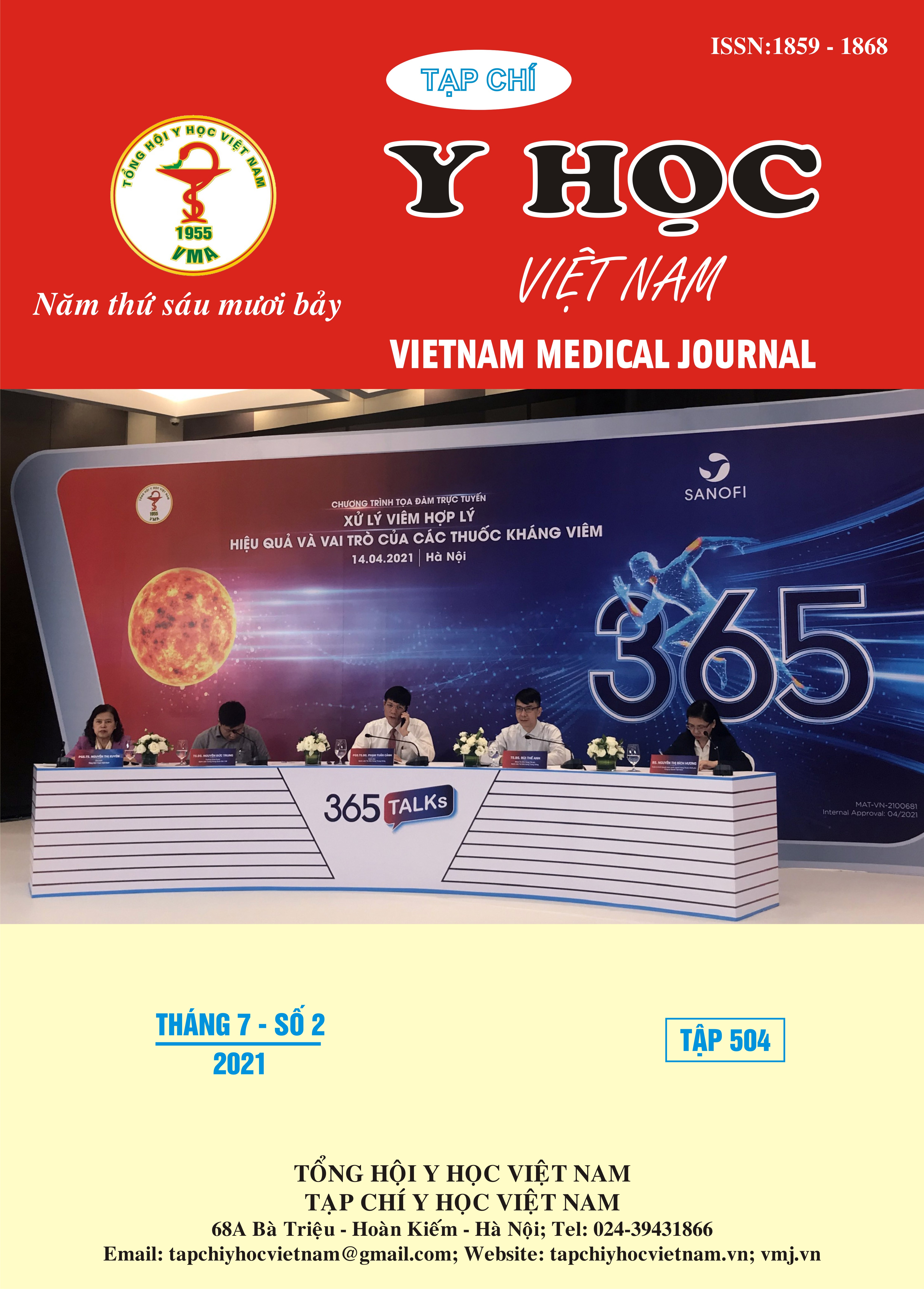PATHOLOGICAL CHARACTERISTICS AND APPLICATION OF LAPAROSCOPIC TOTALLY EXTRAPERITONEAL USING 3D MESH TO TREAT BILATERAL INGUINAL HERNIA IN ADULTS
Main Article Content
Abstract
Objective: This study aimed to describe pathological characteristics and application of laparoscopic totally extraperitoneal (TEP) using 3D mesh to treat bilateral inguinal hernia in adults. Methods: Descriptive study 60 patients with bilateral inguinal hernias undergoing laparoscopic TEP surgery using 3D mesh at Thanh Nhan Hospital from January 2017 to November 2020. Results: All the patients were male, mean age were 51.0 years. Direct hernias were more commons comprising of 63.3%. Classification according to Nyhus type I 3.3%, type II 26.7%, class IIIA 63.3% and IIIB 6.7%. 91.7% preperitoneal cavity were dissection with finger and CO2. 63.3% of the hernia sac was pushed into the abdomen. The small 3D mesh was used in most case (80%), 1 case (1,7%) was stitched fixation mesh. Intraoperative complications were 15%. 1.7% must be additional trocar. The average mesh put time was 21.1 minutes. The mean operative time was 74.9 minutes. Conclusion: TEP laparoscopic surgery using 3D mesh is a safe, feasible, and effective method in bilateral inguinal hernia in adults.
Article Details
References
2. Markus Gass, Laura Rosellaet al (2012). Bilateral total extraperitoneal inguinal hernia repair (TEP) has outcomes similar to those for unilateral TEP: population-based analysis of prospective data of 6,505 patients. Surg Endosc. 26, 1364–1368.
3. Tajamul Rashid, et al (2018). A comparative study of three-dimensional mesh (3D mesh) and polypropylene mesh in laparoscopic inguinal hernia repairs in adults. International Surgery Journal. 5(1), 174 - 180.
4. Aloysius U.O., Uchenna D. (2020). Bilateral Inguinal Hernia: Epidemiology and Outcomes of Surgical Treatment in Southeast Nigeria. Nigerian Journal of Medicine. 29(3), 401-406.
5. Al-Shemy G., et al (2018). Evaluation of open hernioplasty in bilateral inguinal hernia repair. Al Azhar Assiut Medical Journal. 16, 66-72.
6. Zulfiqar Hanif, Rishi Pandya Mohammad Ahmed Sajid, Kumaran Shanmugarajah, Sajid Mahmud (2017). Modification of standard laparoscopic total extra peritoneal hernia repair technique: Methods to improve feasibility in the UK health service. International Journal of Surgery Open. 9, 45 - 47.
7. Kockerling F., et al (2015). Bilateral and Unilateral Total Extraperitoneal Inguinal Hernia Repair (TEP) have Equivalent Early Outcomes: Analysis of 9395 Cases. World J Surg. 39(8), 1887-94.
8. Asuri Krishna, et al (2019). Totally Extraperitoneal Repair in Inguinal Hernia: More Than a Decade’s Experience at a Tertiary Care Hospital. Surg Laparosc Endosc Percutan Tech. 29, 247-251.


